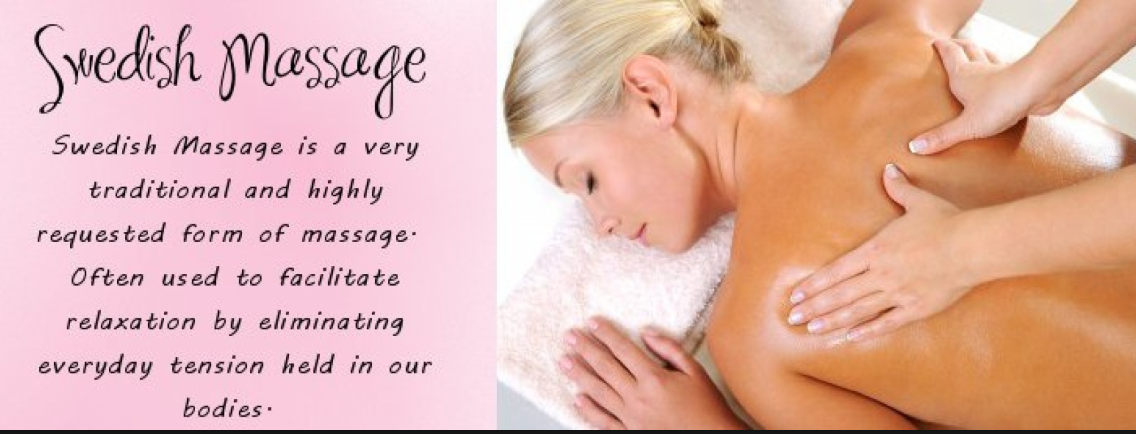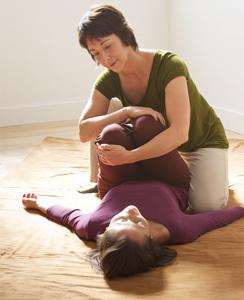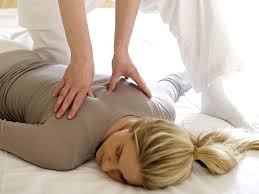What is Swedish Massage?
Swedish Massage is one of the most common and best-known type of massage in the West. Western massage modalities are those massage techniques that are based on a modern or Western understanding of anatomy. These types of massage emphasize treating the soft tissue, muscles, joints, and ligaments of the body through firm pressure and stretching to alleviate tension.
For most, Swedish massage is done for relaxation and uses light to medium pressure. If it’s your first time, or you don’t get massage often, Swedish Massage is often a good choice to make.
During this type of therapy session the therapist will work with the soft tissues and muscles in the body to help restore balance and health using a combination of 5 (or 6) massage techniques. Each technique has variations within them as well, and can be used specifically within a session, or be used in combination with each other.
- Effleurage
- A French word meaning “to skim” or “to touch lightly on”.
- Effleurage is basically a form of massage involving long strokes, that move in a circular stroking movement, made with the palm of the hand.
- This soothing movement is most often used at the beginning and end of the massage. It is also used as a linking move between the different strokes and movements.
- Petrissage
- This term means ‘to knead’ and is also used in French professional bread baking describing a particular stage during dough development.
- These are massage movements, that use applied pressure to compress the underlying muscles. This technique has the most variations that can be used.
- Kneading, wringing, skin rolling, tissue pulling are all petrissage movements.
- Knuckling is another form of kneading but using the knuckles to knead and lift in circular and upwards motion.
- Scissoring is another petrissage movement that is performed only over a flat area with very little pressure. The index and middle fingers of both hands are only used for this movement. They are placed opposite each other and then are slowly worked towards each other lifting and releasing as they go.
- Compression
- Sometime included in petrissage, but is actually distinct in that there is no stroking or kneading involved.
- Tapotement
- The name of this stroke is taken from the French word “Tapoter,” meaning to tap or to drum.
- This technique is rhythmic percussion, most frequently administered with the edge of the hand, a cupped hand or with the tips of the fingers.
- Tapotement is primarily used to “wake up” the nervous system, soften hardened tissue, increase blood flow to the tissue and also as a stimulating stroke which can release lymphatic build up in the back.
- There are five types of tapotement including Beating (closed fist lightly hitting area), Slapping (use of fingers to gently slap), Hacking (use the edge of hand on pinky finger side), Tapping (use just fingertips) and Cupping (make your hand look like a cup and gently tap area).
- A 6th form of tapotement uses vibration, often referred to the piezoelectric effect, that does the tapping with tools. This tapping can either be directly on the body with the tool, or tapping on a medium that is resting on the body, such a stone or bell.
- Rocking
- Can you remember back to a time when someone who loved you dearly gently rocked you into a peaceful place of calm reassurance? Or perhaps you have sweet memories of when you soothingly rocked your own little one to sleep. This simple yet profoundly effective type of bodywork has numerous benefits.
- Gently rocking and shaking the body helps relax muscles, calm the nervous system, open up joints, and helps bring the body into balance.
- Friction
- In friction massage tissues are manipulated using strong movements of the hand. It consists of deeper circular or transverse movements made with the thumbs, fingertips, knuckles, palms, or elbows. It is a stroke that aims to penetrate through the skin and to manipulate the muscles beneath. It is the most penetrating of the strokes, targeting the deeper layers of the tissue.
- Friction is a massage technique is used to increase circulation and release areas that are tight; particularly around joints and where there are adhesions within the muscles or tendons.
- Massage Friction Classification:
- Circular and Transverse. Based on the direction of the manipulation.
- Finger friction. Small circles made with the fingertips or with the thumb.
- Palm Friction. Large circles made with the palm.
- Cross Fiber Friction. Any friction that is executed across the muscle fiber. Various angles are permitted. This pressure is usually very deep.
- Other types: elbow friction and knuckle friction.
The end result will relax all of the muscles in your body and release any pain that tension may exist.
A Swedish body massage is the perfect way for anyone who is overly worked and stressed out to relax their body and mind. By relieving muscle tension, Swedish therapy can be both relaxing and energizing. And it may even help after an injury.
Why It’s Called Swedish Massage?
While massage may be the oldest medical practice in history, it was not until the 1800s that specific massage techniques were codified into a particular style or modality. The Swedish Massage modality was invented around 1868 by Dutch doctor Johann Georg Mezger. However, it is Per Henrik Ling, who is often (and wrongly) credited with inventing Swedish Massage. The historical mix-up is common and it’s worth briefly exploring who both men were and why this inaccuracy still exists today.
Swedish massage is the foundation for other types of Western massage, including sports massage, deep tissue massage and aromatherapy massage.
What Happens During a Swedish Massage?
In a Swedish massage, the therapist directly lubricates the skin with massage oil or lotion and performs various massage strokes. These movements warm up the muscle tissue, release tension and gradually break up muscle “knots” or adhered tissues, called adhesions.
Before the massage, the therapist should ask you about any injuries or other conditions that he or she should know about. Things you would want tell a therapist include areas of tightness or pain, allergies, and conditions like pregnancy. You can also tell them up front if you have a preference for light or firm pressure.
Health Benefits of Swedish Massage
The Swedish massage helps to improve the function of your lymph system by relaxing your muscles. The lymph system works to move nutrient-filled fluids and waste around your body. The fluid is moved only through voluntary movements from the muscles.
Anyone who has problems from muscular strain will benefit from a Swedish massage. As the therapist relaxes the muscles the lymph system will have the ability to flush out all of the metabolic waste from the muscles. This will help you to heal faster.
The Swedish massage can also be used as therapy for people who suffer from any type of debilitating joint disorder that causes them pain. This benefit of the Swedish massage works to increase the elasticity in the tissues, flexibility, and to reduce the pain that they feel. After the Swedish massage many of these people will find that they are able to use their joints more than before and with little to no pain.
Personal Benefits of Swedish Massage
While a Swedish massage works great to help people who suffer from health conditions it also works wonders on people who suffer from everyday troubles and concerns. There are many things in our life that can cause us to be stressed and worried on a constant basis. The more stress we have, the more tense our muscles become, and the more difficult it is to relax them on our own.
The pressure used during a Swedish massage therapy help to relax the muscles and relieve all of the tension that has built up. Touching the skin also helps to clear the mind and bring us to the present. Therapists suggest a Swedish massage to anyone who is feeling run down or suffering from mild depression, because it will help give you the energy you need to relax your whole body. It also enables you to put things into perspective.
Another benefit of the Swedish massage is its ability to help you sleep. With sleep your mind will be able to rest and reset.




